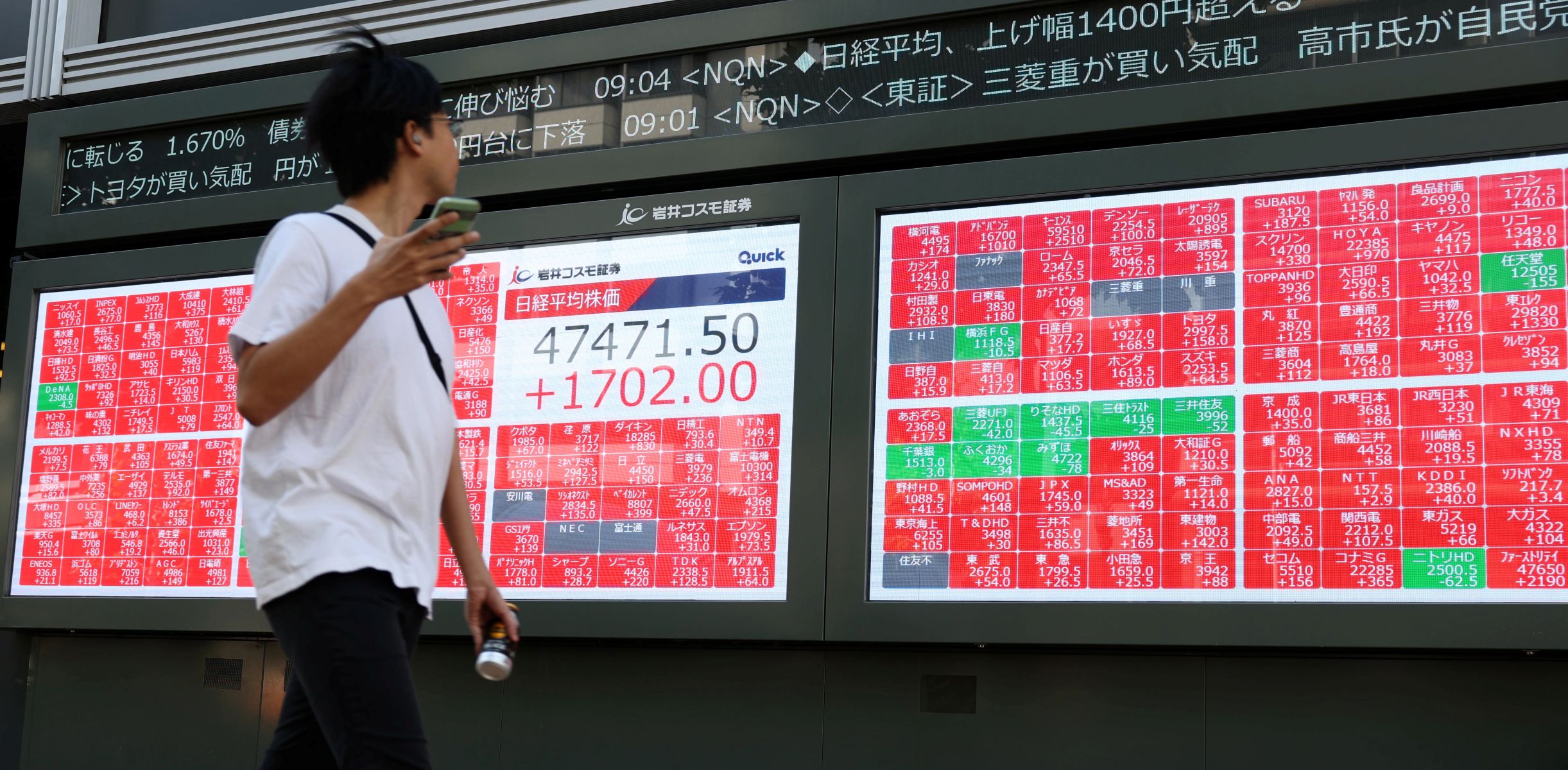The team sought out to source the absolute best ingredients, and create around them. “When you choose the ingredient, you’re halfway done,” she says. “After that, it starts—[you must find a] way to contrast [them].” The Iris Root eau…
Blog
-

October 2025 update to TIGER: Surface resilience even as underlying fragilities mount
The global economy has proven surprisingly resilient, but cracks in the foundation are beginning to appear. The October 2025 update of the Brookings-FT TIGER (Tracking Indexes for the Global Economic Recovery) reveals an economic landscape that looks benign but remains unsettled, with household and business confidence weighed down by trade policy uncertainty, political upheaval in many countries, and geopolitical volatility.
Advanced economies are grappling with rising debt burdens, aging populations, and political gridlock. Emerging market economies have been helped in part by a weaker dollar that has alleviated financing pressures but are showing signs of strain. Protectionist tendencies triggered by the Trump tariffs are rippling through labor markets and dampening consumer demand around the world, compounding structural weaknesses in trade-dependent economies. Meanwhile, financial markets, which were initially spooked by America’s erratic trade policies, are forging ahead, with equity indexes across the world scaling new highs even as growth prospects weaken.
Select a country below the Composite Index to view charts for the main TIGER indexes by country and charts for the indicators that make up the indexes, which are broken down by real activity, financial, and confidence indicators for advanced economies and emerging markets.
The U.S. economic expansion is losing steam as the Trump administration’s erratic trade policies, harsh attitudes toward immigration, and cuts in social expenditures take a toll on growth and employment. Equity markets have forged ahead, bolstered by exuberance about productivity and other benefits of artificial intelligence (AI). While the probability of a recession remains low, aggregate indicators have thus far masked manufacturing sector weakness and the labor market looks less robust than it had appeared just a couple of months ago. Inflation has remained in check, but that is changing as companies reach the limits of their ability to absorb tariffs and pass on the costs to consumers. The Fed’s room for maneuver is becoming increasingly constrained by an uptick in inflation, a weakening labor market, and explicit political pressures to cut policy rates.
The core eurozone economies are floundering. Germany is facing a potential third consecutive year of economic contraction as it remains beset by loss of manufacturing competitiveness and skill shortages. A revival of industrial production has done little to reverse the decline in job numbers or boost private spending. France is on the brink of a fiscal crisis driven by excessive public spending, with political turmoil impeding meaningful reforms essential for a recovery. The economies of Southern Europe, especially Italy, Spain, and Greece, have seen their reversals of fortune continue, with improved fiscal positions as well as robust service sector expansion and wage growth.
Growth in the United Kingdom has flatlined as the beleaguered Labour government struggles to manage the high cost of living and a failing public services infrastructure, which have contributed to low levels of confidence. In Japan, rising inflation has prompted a hawkish shift on monetary policy, although the Bank of Japan has to navigate around the dangers that the decline in global demand and an uncertain tariff landscape pose to the country’s export-oriented economy. South Korea is confronting weakness in domestic household demand and its export growth could be dented if high tariffs hit its automobile and chip exports.
The Chinese economy has maintained stable aggregate growth but that expansion has become increasingly unbalanced. Weak household demand and cutthroat corporate competition have resulted in persistent deflationary pressures, even as exports to non-U.S. markets have continued to grow rapidly. The government’s “anti-involution” drive to restrain competition that is destructive to corporate profits has not been accompanied either by policy stimulus or reforms to boost consumption demand. Nevertheless, along with measures to increase retail investor participation in stock markets and the confidence boost from China’s AI boom, it has led to a sharp rally in equity prices. The housing market continues to unravel and remains a drag on private sector confidence.
India’s economy continues to post strong growth, driven by a resilient urban consumer base and high levels of manufacturing investment. Falling inflation and disciplined fiscal policy have created room for monetary easing if needed to support growth. The challenge of creating jobs for its young and expanding workforce is being intensified by an uncertain trade landscape, particularly as the U.S.-India economic relationship has turned unexpectedly rocky. This development has also dimmed India’s luster as a destination for foreign investors.
Soaring military outlays and falling energy prices have dampened Russia’s growth prospects, following several years in which the economy had successfully weathered Western sanctions. Emerging markets in Latin America continue to contend with low growth and large current account deficits. Brazil’s economy is slowing, held back by lower household consumption and falling investment. Mexico has fared better, with resilient exports and easing inflation supporting modest expansion, though weak investment and exposure to US tariff risks have tempered growth momentum.
Economic growth has been surprisingly stable in most corners of the world, despite enormous uncertainty in global trade and geopolitics, as well as various short-term and looming long-term pressures that each economy faces. As growth slows even moderately, structural issues that have been simmering under the surface will become increasingly apparent and difficult to ignore. The divergence between growth prospects and equity market performance suggests a more benign outlook, perhaps buoyed by the transformative potential of AI and the hope of less uncertainty in the trade landscape, even if tariff barriers settle at a higher level than in the pre-Trump period. Policymakers need to use this time of relative calm to push forward with reforms and disciplined policies that will improve their economies’ resilience in the face of greater volatility engendered by the breakdown of the rules-based order.
Continue Reading
-

Men’s Golf Heads to Purdue Fall Invitational
BOWLING GREEN, Ky. – The WKU men’s golf team’s fall schedule continues at the Purdue Fall Invitational on Monday, Oct. 13 and Tuesday, Oct. 14 in West Lafayette, Indiana at the Birck Boilermaker Golf Complex.
TOURNAMENT INFO- Purdue Fall…
Continue Reading
-
Donald Trump scrambles to seal the deal in Gaza – The Economist
- Donald Trump scrambles to seal the deal in Gaza The Economist
- What we know about the ‘first phase’ Gaza ceasefire deal BBC
- Israel and Hamas agree to part of Trump’s Gaza peace plan, will free hostages and prisoners AP News
- Tens of thousands…
Continue Reading
-

Microsoft Stock Set to Benefit From 365 Premium Launch
Microsoft Today
$510.96 -11.44 (-2.19%)As of 10/10/2025 04:00 PM Eastern
- 52-Week Range
- $344.79
▼
$555.45
- Dividend Yield
- 0.65%
- P/E Ratio
- 37.46
- Price Target
- $618.47
Microsoft Corporation NASDAQ: MSFT recently…
Continue Reading
-
Jacob Kiplimo, Hawi Feysa produce dominant wins in Chicago Marathon – Dawn
- Jacob Kiplimo, Hawi Feysa produce dominant wins in Chicago Marathon Dawn
- Watch 2025 Bank of America Chicago Marathon live NBC 5 Chicago
- Chicago Marathon results: Jacob Kiplimo wins 2025 Chicago Marathon-Conner Mantz breaks American marathon r
Continue Reading
-

Former Wales head coach, Warren Abrahams, dies aged 43
Warren Abrahams, former head coach of Wales’ women’s side, has died aged 43.
Abrahams, who was in charge of Wales from November 2020 to July…
Continue Reading
-

Cancer specialist warns how consuming too much dairy regularly may raise cancer risk: ‘People who consume…’
Dairy products are a common part of diets worldwide, often praised for their calcium and protein content. However, like many foods, moderation is key. Consuming certain dairy products excessively may pose health risks. Dr Sharmin Yaqin, M.D….
Continue Reading


